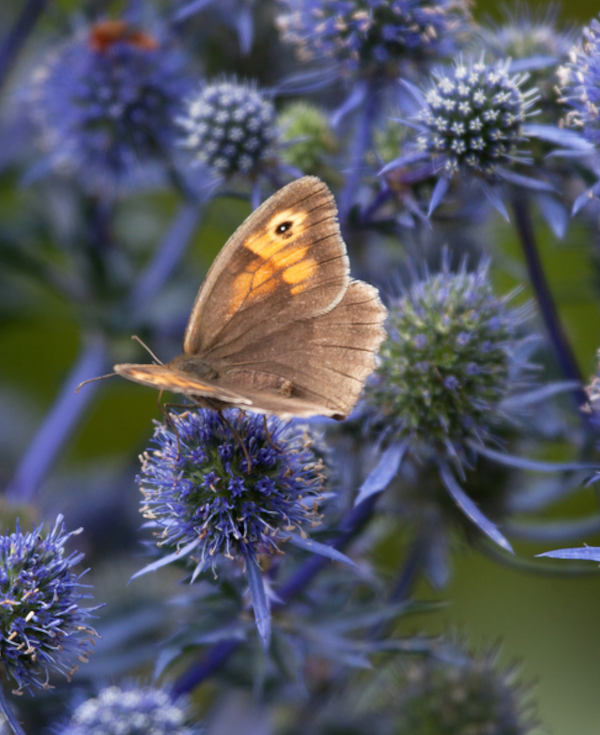How to grow Eryngium
There are about 250 species of eryngium throughout the world. Most species are native to south America with 25 varieties native in Europe and 2 species native to the U.K. They can be annual, biennial or perennial. Some perennial varieties are deciduous (herbaceous) whilst others can retain their leaves all year round. There are a number of cultivated varieties grown for their ornamental value in the garden of each species.
Within the Apiaceae family also known as Umbellifers, eryngium have well known relatives such as carrots, celery, parsnip and parsley which typically all have hollow stems, divided or compound leaves and flowers of umbel shape.
The common name for eryngium is ‘Sea Holly’ definitely not to be confused with the garden shrub or tree commonly called Holly with the Latin name of Ilex!
Eryngium prefer open full sun locations with most preferring poor dry soil – even the sand and shingle of seaside beaches where the native blue flowered Eryngium maritimum thrives. Eryngium campestre - Field Eryngo is the other U.K. native. Usually found in old pasture or coastal grassland. Campestre looks similar to maritima, but is taller and less robust with paler silvery green leaves. Its bracts are smaller and thinner with the flowers being pale green to white in colour.
A clump forming perennial with green basal leaves which can also be evergreen, dependent upon variety, most varieties are winter hardy providing the soil is very well drained during our British winter wet.
Called holly due to their flowering prickly, thistle-like-bracts, the flowerheads in shades of green, silver and blue of all eryngium can be dried for floral arrangements. In the garden the flowering bracts are particularly popular with honeybees and other pollinating insects attracted by their nectar and pollen.
Culinary delicacies are made from eryngium such as candied eryno root, also known as sweetmeat, famous in Colchester in centuries past, harvested from Eryngium maritima growing on the Suffolk beaches nearby. From Eryngium foetidum Thorny Coriander leaves are used in Caribbean inspired dishes.
Eryngium planum is used in European medicine as a diuretic owing to its essential oils and bioactive compounds.
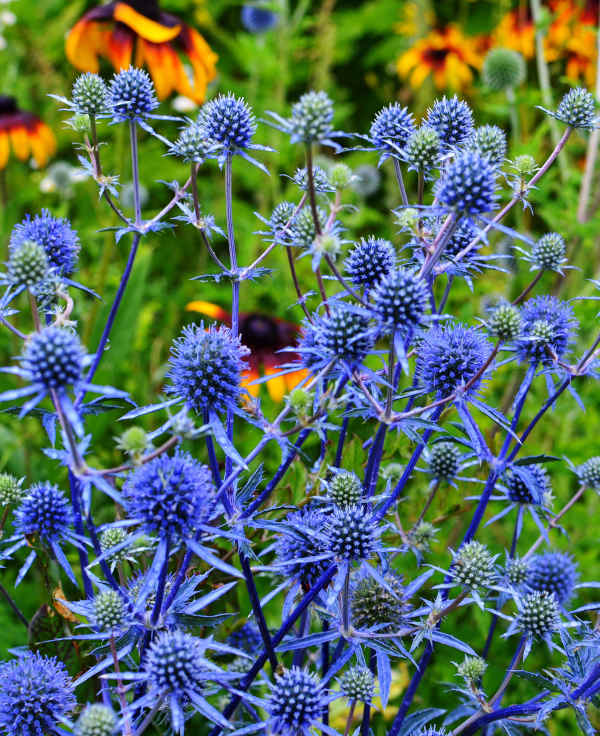
Zantedeschia is a genus of flowering plants from the family Araceae and is native to southern Africa. With a rich history dating back to the Ancient Romans, these deciduous or semi-evergreen perennials have been used as a symbol of celebration. Zantedeschia was Named after Professor Giovanni Zantedeschia, an Italian botanist.
There are two main forms of Zantedeschia: hardy and tender. Hardy forms of the plant can be grown outdoors, enjoy moist soil and full sun or partially shaded conditions - these are known as Arum lilies. Tender forms of Zantedeschia prefer being grown in containers or pots and should be brought inside over the winter - these are known as Calla lilies.
With tuberous flora in all colours from whites, yellows and oranges to deep reds and purples, Zantedeschias are not to be overlooked in any garden, as long as they have sufficient sunlight to grow in.
Ready to learn more about growing Zantedeschia? Read on for all there is to know...

Key Information
Soil pH
Position
Hardiness

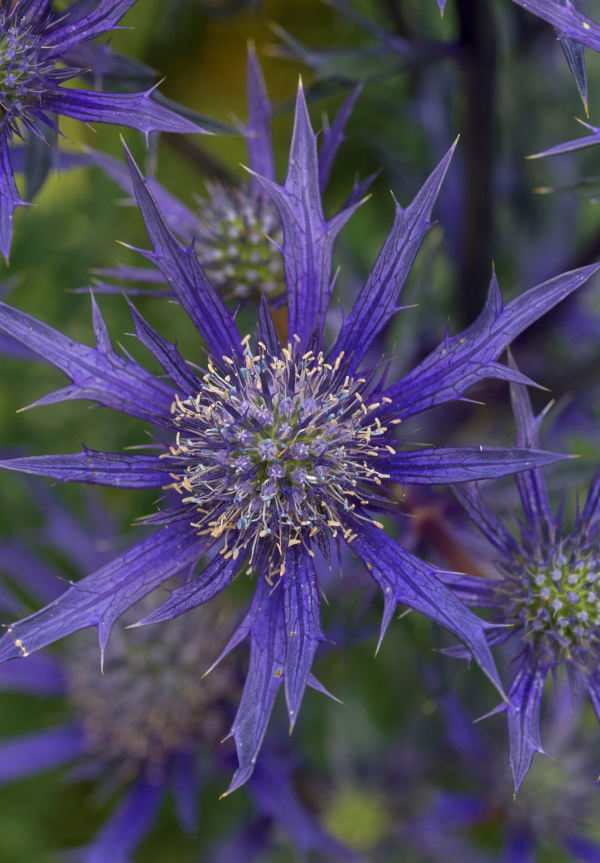

Where & when to plant Eryngium
Position - Full Sun
Soil - Well drained soil which can be slightly acidic to alkaline. Will grow in chalk, loam or sand.
Flower - Summer to Autumn.
Horticultural Divisions - here we list out the most popularly cultivated species and hybrids available in the U.K.
| Species | Common name |
Can be grown outside in the summer (H1c / 5°C to 10°C) | Eryngium foetidum | Thorny Coriander, Shadow Beni, Mexican Coriander |
HARDY – Hardy through most of the U.K. (H4 / -5°C to -10°C) | Eryngium agavifolium | Agave-leaved sea holly |
Eryngium leavenworthii | Purple sheen | |
Eryngium ovinum | Blue devil | |
Eryngium pandanifolium | Pandan-like-leaved eryngo | |
Eryngium paniculatum |
| |
Eryngium variifolium | Variable-leaved sea holly | |
Eryngium yuccifolium | Rattlesnake-master | |
Hardy in most places throughout the U.K. even in severe winters H5 / -10°C to -15°C) | Eryngium alpinum | Alpine eyngo |
Eryngium amethystinum | Amethyst sea holly | |
Eryngium bourgatii | Mediterranean sea holly | |
Eryngium campestre | field eryngo | |
Eryngium ebracteatum | burnet-flowered sea holly | |
Eryngium maritimum | Sea Holly | |
Eryngium planum | Blue Eryngo | |
HARDY – In all of the UK and Northern Europe (H6/ -15°C to -20°C) Grow anywhere in the UK
| Eryngium giganteum | Miss Willmott's Ghost |
Eryngium can be planted all year around when purchased grown in pots but early to mid spring are probably best for an easier transplant. Bare rooted plants are best planted in early spring when the ground is not frozen or waterlogged.
If container grown plants are planted out during the active summer growing season make sure that they are watered regularly until the plant has settled into its new location. Water at soil level rather than the foliage.
Eryngium are ideal in cottage garden schemes, middle of flower borders in full sun, gravel gardens, coastal gardens, wildlife gardens, cut flower gardens and containers!
How to plant Eryngium
- For planting in the garden, dig the soil area removing any large stones and weeds and breaking up any lumps. Mix in some organic matter, ideally leaf mould, though manure or garden compost are also fine. Rake level and firm with your heels. Rake level again.
- Water plants well and allow to drain before planting.
- A good tip is to dig a hole twice the size of the root-ball. Fill with water and allow to drain before placing in the plant which is especially good for summer plantings.
- Remove the plant from its pot placing the plant in the hole, ensuring the top of the root ball sits level with the surface of the soil. Too low and the plant may rot, too high and the roots can dry out. If bare root hold the plants crown at soil surface level allowing roots to dangle into the hole.
- Backfill with soil and firm in gently with your foot.
- Soak soil well with water.
- For planting in containers, first choose an appropriately sized pot around 5-7cm larger than the root ball of your plant (you’ll need to gradually increase the pot size every few years). Always ensure there are plenty of drainage holes in the bottom.
- Use a good quality potting compost if you have it and mix with garden soil. Mix in some horticultural grit and, if not already present (check the labelling on the bag) some slow-release fertiliser granules.
- Start by partially filling the pot with compost; enough so that when placed on it the upper surface of the root ball is about 3cm lower than the top of the pot.
- Fill around the plant with compost, firming down with your fingers then adding a little more so it is held tight.
- Pick up the container and lightly tap on the potting bench or ground a few times to help further settle the compost around the plant.
- Soak well with water.
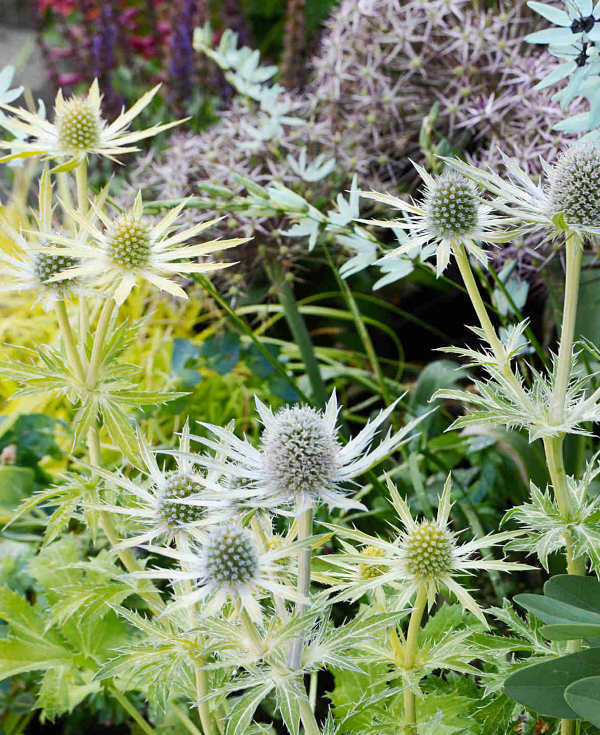
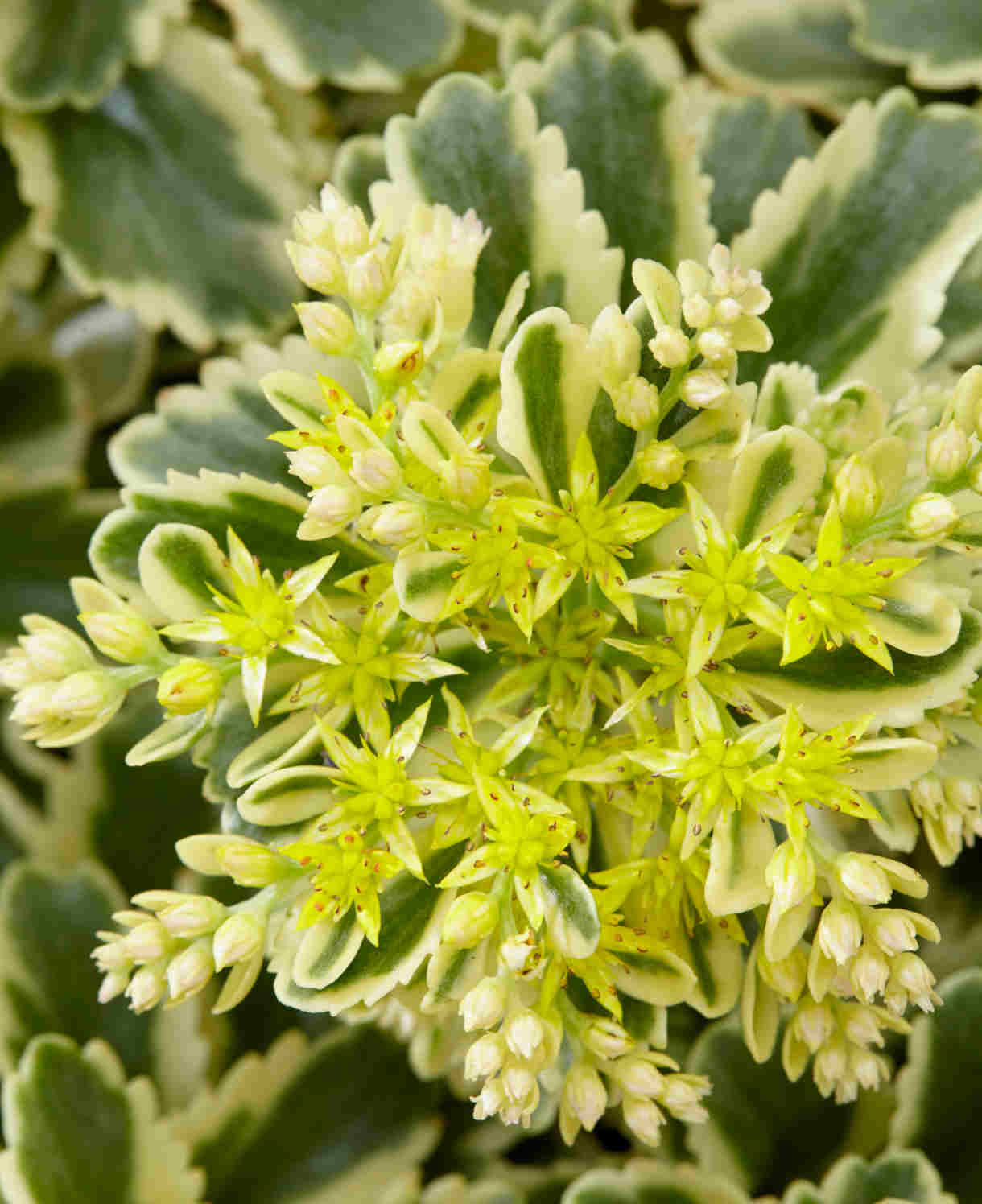
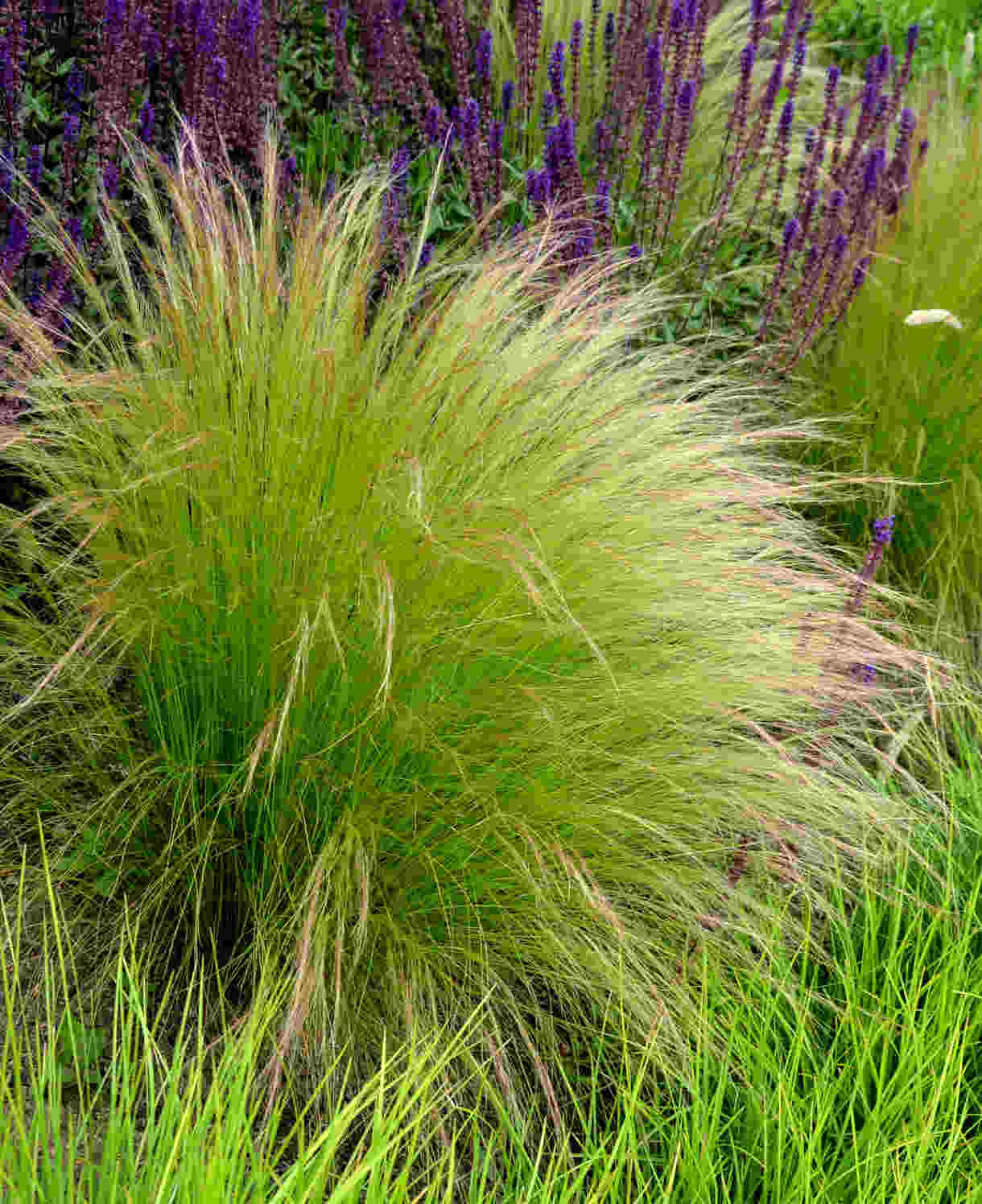
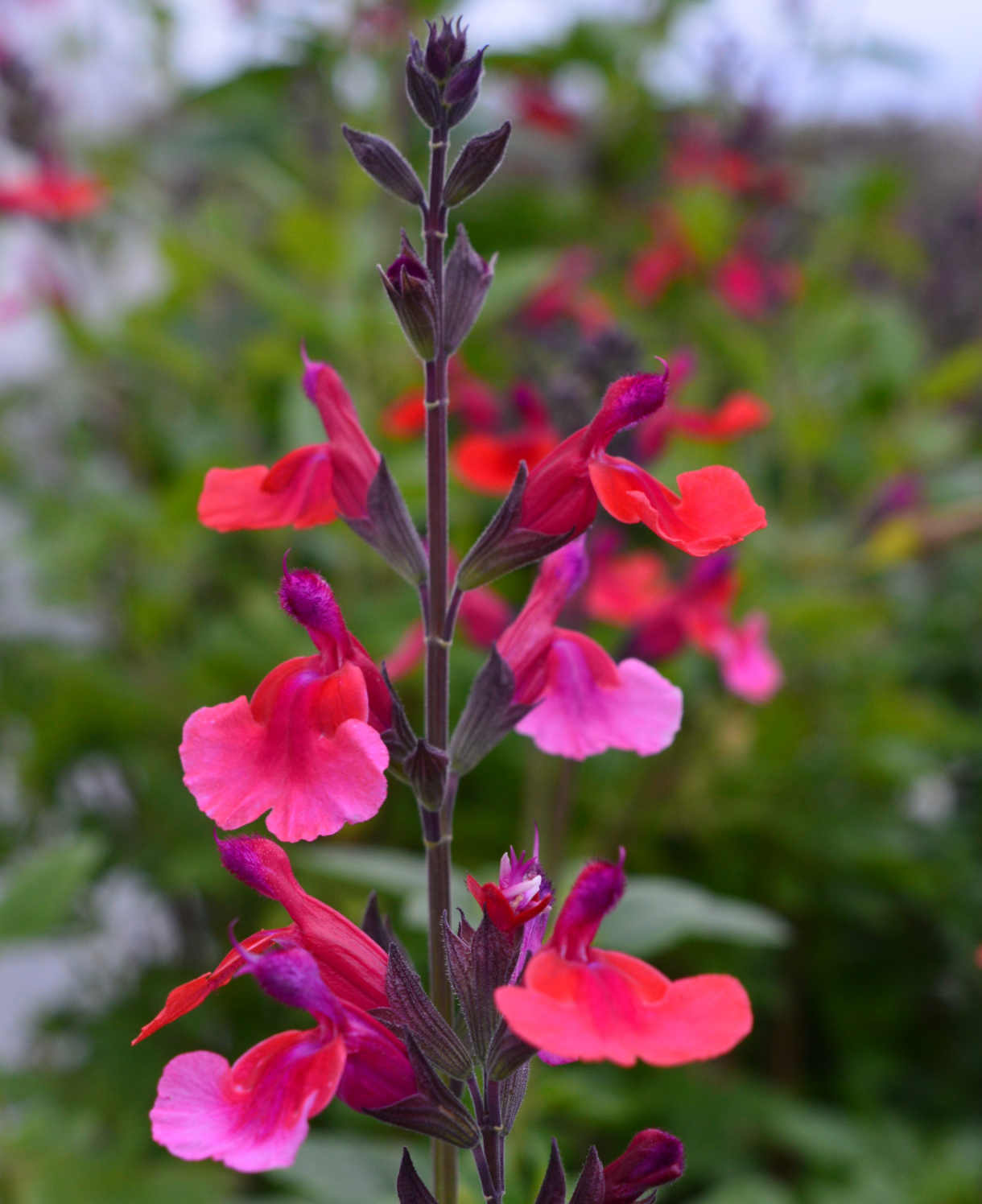
How to care for Eryngium
Pruning and Deadheading
Remove spent eryngium flowers by cutting off flowering stem at the base. The stems are excellent for drying for winter indoor displays.
Tidy decaying foliage away.
Watering
Preferring free drained sites water sparingly.
On planting outside, they benefit from a good watering in on planting and then regular soakings until established. After this they should not need watering.
If grown in containers water the soil regularly checking the to see if the soil is dry when you wiggle your fingertip into the soil surface. Ensure the container has plenty of drainage holes and water can escape from the bottom of the pot by using pot feet.
Feeding
On healthy, fertile soil, a mulch of well-rotted organic matter (i.e., a layer of leaf mould, manure, or garden compost applied to the soil around the plant) should provide enough nutrients for your eryngium. This has the added benefit of suppressing weeds and locking in moisture. Mulch when planting, and then again each spring.
If you garden on poor soil or your eryngium looks in need of a boost, applying a granular general purpose feed to the surface of the soil and lightly working in can reap benefits. This is known as a top dress and should be done when you’re mulching in spring – first apply the feed, then cover with the mulch.
Container-grown plants are different as they rely solely on the gardener for nutrition. Get off to a flying start by making sure you use a good quality compost with slow-release granules mixed in. These generally provide nutrients for around 6 to 8 weeks, after which you’ll need to apply a liquid feed every 2-3 weeks until the end of the growing season (i.e., September-ish).
Remember to repot your eryngium every few years into a slightly larger pot using fresh compost. In-between, it’s worth removing the top few centimetres of compost each spring and replacing with a fresh mix of compost and slow-release granules.
Cold Protection
Eryngium, whilst fairly hardy do not like winter wet. Ensure the plant is situated in a dry free drained location and containers are raised on pot feet. It’s a good idea to cover the crown with a 20cm layer of straw to help keep the crown dry in really wet winters. Remove the straw in early spring.
Pests and Diseases
Eryngium may be susceptible to leaf and bud eelworms, and slug and snail attack.
How to propagate Eryngium
The recommended way to propagate eryngium is by root division to be assured of true to parent type variety growth. If grown from seed heads from the garden the variety will not be true to type.
When your plant is at least 3 years old and has been growing well in the previous season you should be able to divide the root structure into more plants.
Eryngium are summer flowering so require division in early spring.
- Make sure the plant is not suffering from drought, pest or disease.
- Lift plants carefully by digging all around its crown with a fork.
- Shake off excess soil so you can clearly see the roots.
- Gently tease apart the rhizome you may need a sharp clean knife portion the root into 2 or 3 sections each containing growing tips and roots.
- Trim off all foliage to above the crown.
- Either replant the bare rooted section back into the position in the garden as described in Planting in the Garden or plant root sections into a 1 litre pot as per the instructions for Planting into a Container
- Water well and leave.
- The eryngium plants should show signs of leaf growth as spring progresses.
* Many plants carry Plant Breeders Rights and cannot be propagated for commercial purposes.
Common Eryngium questions
How long does Eryngium take to grow?
It will take approximately 3 years for an eryngium plant to reach is optimum size.
Is Eryngium easy to grow?
Very easy. Eryngium is a low maintenance plant which prefers little attention and rarely needs watering and prefers poor quality soil.
Is sea holly invasive?
Even though sea holly is self-sowing it is rarely invasive.
Are Eryngium poisonous to dogs?
There are no reported toxic effects known.
